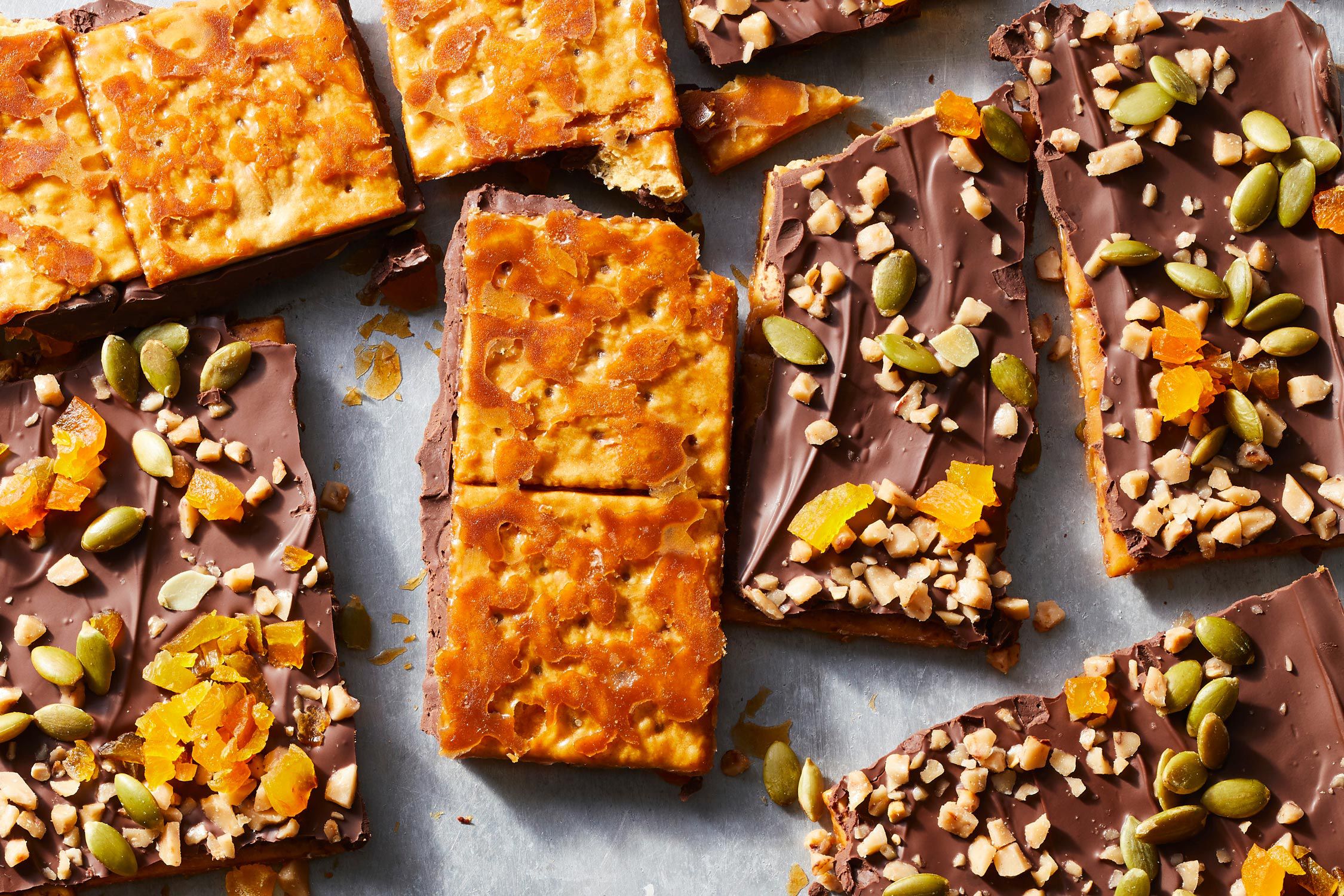The Crunchy Delight of Saltine Crackers: A Comprehensive Guide
Saltine crackers, also known as soda crackers, have been a staple in households for generations. These light, crispy snacks are often enjoyed on their own, paired with various toppings, or used as an ingredient in numerous recipes. In this article, we will explore the history, nutritional value, culinary uses, and some fun facts about saltine crackers. Whether you are a long-time fan or new to these delightful snacks, this guide will help you appreciate everything there is to know about saltine crackers
1. Introduction to Saltine Crackers
Saltine crackers are rectangular, thin, and crispy crackers that are typically made from flour, baking soda, and yeast. They are well-known for their distinctive salty flavor, which makes them a versatile snack. Saltines are often enjoyed with soups, cheeses, and spreads, and can be a crunchy topping for casseroles or salads. Their light texture and mild taste make them a favorite among people of all ages.
These crackers have earned a special place in American culture, often associated with comfort food and childhood memories. Many people remember enjoying saltine crackers with peanut butter, cheese, or even alone as a simple snack. In addition, saltines have become synonymous with classic dishes like clam chowder or chicken soup, serving as a perfect accompaniment to warm meals.
2. The History of Saltine Crackers
The story of saltine crackers dates back to the early 19th century. The term “saltine” is derived from the word “soda,” referring to the use of baking soda in their preparation. The first saltine crackers were produced in the United States around 1876 by the Nabisco company, which was originally known as the National Biscuit Company.
The original recipe for saltines was created as a simple way to make a dry, crunchy snack that would last long without spoiling. Their long shelf life made them a popular choice for sailors and travelers. In fact, many sailors would take saltine crackers on their journeys because they were easy to store and could withstand various climates.
Over the years, saltine crackers have evolved, and different brands have put their own spin on the classic recipe. Today, you can find various types of saltines, including low-sodium, whole grain, and flavored varieties.
3. Ingredients and Nutritional Information
Saltine crackers are typically made from a few basic ingredients:
- Flour: All-purpose flour is commonly used, providing the primary structure of the cracker.
- Baking Soda: This ingredient helps the crackers rise and gives them a light texture.
- Yeast: Yeast is often included in the recipe to create the airy texture that saltines are known for.
- Salt: Salt is a key ingredient, contributing to the flavor and the name “saltine.”
- Water: Water is used to bring the ingredients together to form a dough.
Nutritional Information
A standard serving size of saltine crackers is about 5 crackers, which typically contains:
- Calories: 120
- Total Fat: 2 g
- Sodium: 300 mg
- Total Carbohydrates: 22 g
- Dietary Fiber: 1 g
- Sugars: 0 g
- Protein: 2 g
While saltine crackers are not the most nutritious snack option, they can be part of a balanced diet when enjoyed in moderation. They provide carbohydrates for energy, and the added salt can help replenish electrolytes after exercise.
4. Culinary Uses of Saltine Crackers
Saltine crackers are incredibly versatile and can be used in a variety of culinary applications. Here are some popular ways to enjoy saltine crackers:
As a Snack
One of the simplest ways to enjoy saltines is as a snack. They can be eaten plain or paired with toppings. Here are some popular options:
- Peanut Butter: Spread creamy or crunchy peanut butter on saltines for a satisfying snack.
- Cheese: Top with your favorite cheese, whether it’s cheddar, cream cheese, or goat cheese.
- Hummus: Dip saltines into hummus for a healthy and flavorful treat.
In Soups and Stews
Saltine crackers are commonly used as a crunchy topping for soups and stews. Their texture adds a delightful contrast to warm, comforting dishes. Here are a few ideas:
- Clam Chowder: Crushed saltines can be sprinkled on top of clam chowder for added crunch.
- Chicken Noodle Soup: Serve saltines alongside chicken noodle soup for a traditional pairing.
As an Ingredient in Recipes
Saltine crackers can also be used as an ingredient in various recipes. Here are some popular uses:
- Crust for Dishes: Crushed saltines can be used to create a crust for casseroles or baked dishes.
- Toppings: Use crushed saltines as a topping for baked macaroni and cheese or other casseroles.
- Homemade Snacks: Saltine crackers can be used to make homemade treats like toffee or chocolate-covered snacks.
5. Popular Recipes Featuring Saltine Crackers
Saltine crackers can be the star of various recipes, adding flavor and texture to a wide range of dishes. Here are a few popular recipes that incorporate saltine crackers:
Saltine Cracker Toffee
This simple yet delicious recipe combines saltine crackers, butter, brown sugar, and chocolate to create a sweet treat. Here’s how to make it:
Ingredients:
- 1 sleeve of saltine crackers
- 1 cup of unsalted butter
- 1 cup of packed brown sugar
- 2 cups of chocolate chips
Instructions:
- Preheat the oven to 400°F (200°C).
- Line a baking sheet with aluminum foil and arrange the saltine crackers in a single layer.
- In a saucepan, melt the butter and brown sugar together, stirring until combined.
- Pour the mixture over the saltines and spread it evenly.
- Bake for 5-7 minutes, until bubbly.
- Remove from the oven and sprinkle chocolate chips on top. Let them melt, then spread the chocolate evenly.
- Allow to cool, then break into pieces and enjoy!
Cheesy Saltine Cracker Snack
This savory snack is perfect for parties or game day. It combines cheese and spices for a flavorful treat.
Ingredients:
- 1 sleeve of saltine crackers
- 1 cup of shredded cheddar cheese
- 1/2 teaspoon of garlic powder
- 1/2 teaspoon of paprika
- 1/4 teaspoon of cayenne pepper (optional)
Instructions:
- Preheat the oven to 350°F (175°C).
- Arrange the saltine crackers on a baking sheet.
- Sprinkle shredded cheddar cheese over the crackers.
- In a small bowl, mix the garlic powder, paprika, and cayenne pepper. Sprinkle the mixture over the cheese.
- Bake for 10-12 minutes until the cheese is melted and bubbly.
- Allow to cool slightly before serving.
Saltine Cracker Chicken
This easy recipe uses saltine crackers to create a crispy coating for chicken. It’s a quick and delicious dinner option.
Ingredients:
- 4 chicken breasts
- 1 sleeve of saltine crackers, crushed
- 1/2 cup of buttermilk
- 1 teaspoon of paprika
- Salt and pepper to taste
Instructions:
- Preheat the oven to 375°F (190°C).
- In a shallow bowl, pour the buttermilk over the chicken breasts. Let them marinate for 15 minutes.
- In another bowl, mix the crushed saltine crackers, paprika, salt, and pepper.
- Remove the chicken from the buttermilk and coat each breast in the saltine mixture.
- Place the coated chicken on a baking sheet and bake for 25-30 minutes until cooked through and golden brown.
6. Fun Facts About Saltine Crackers
Saltine crackers have an interesting history and unique characteristics. Here are some fun facts you might not know:
- National Snack Day: Saltine crackers have their own unofficial day of recognition: National Saltine Cracker Day is celebrated on July 6 each year.
- A Favorite of the U.S. Military: Saltine crackers are a popular snack among military personnel due to their portability and long shelf life.
- Used in Science Experiments: In some science classrooms, saltine crackers are used to demonstrate the process of digestion and the effects of chewing on food.
- Global Variations: While saltine crackers are most popular in the United States, other countries have their own versions. For example, in the UK, similar products are known as “water biscuits.”
- Salted Top: The characteristic salt on the top of the cracker is not just for flavor; it also helps prevent the cracker from becoming too soggy when served with soup.
7. Conclusion
Saltine crackers are a beloved snack that has stood the test of time. With their crunchy texture, mild flavor, and versatility, they can be enjoyed in many ways, whether as a standalone snack or as an ingredient in various recipes. Understanding their history, nutritional value, and culinary applications can help you appreciate this simple yet delightful snack even more. So the next time you reach for a box of saltine crackers, remember the rich heritage and endless possibilities they of

